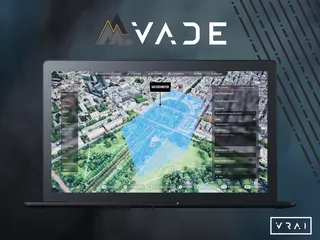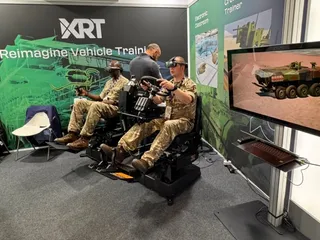2016 I/ITSEC Conference “Snapshot”
Contact Our Team
For more information about how Halldale can add value to your marketing and promotional campaigns or to discuss event exhibitor and sponsorship opportunities, contact our team to find out more
The Americas -
holly.foster@halldale.com
Rest of World -
jeremy@halldale.com
HTE correspondent Marty Kauchak provides an update on technology, business development and policy insights of interest to the medical simulation & training community from the 2016 I/ITSEC. The conference convened November 28 - December 1 in Orlando.
Technology Developments
This author has watched the rapid evolution of serious games for training in the military sector through the last decade. Given the returns on investment this technology offers individual and team learners for appropriate tasks in high risk industries, the healthcare community is stepping up its pace to develop games for their specific uses.
Two healthcare games for training caught this author’s attention at the 2016 Serious Games Showcase & Challenge on the exhibition floor.
The US Army Research Laboratory sponsored early work on USC Standard Patient. The product has been advanced under the leadership of University of Southern California (USC) Institute for Creative Technologies and BreakAway Games. The game provides an assessment system, designed to supply specific, useful feedback to students to as they seek to mature their clinical interview skills. The current menu of applications includes diagnostic medical interviewing, simulated office visits and patient counseling. A core technology in Standard Patient is the use of conversational virtual standardized patients (VSPs). The VSPs, based on SimCoach virtual human technology, can converse in English and more than a dozen other languages. Standard Patient is in use, or development, with the Uniformed Services University of the Health Sciences, the US Air Force School of Aerospace Medicine and the US Navy Surface Warfare Medicine Institute.
A second product, Pediatric Vital Signs, presented by Children’s Hospital Los Angeles, Keck School of Medicine USC and BreakAway Games, is a 2-D, time management game set in a pediatric emergency department that assesses physician multi-patient management skills.
In an adjacent technology space, The Army Research Lab-Orlando demonstrated two new medical trainers.
The Fasciotomy part task trainer (PTT) is a prototype capability designed to explore enhanced training capabilities for lower extremity fasciotomy. Here’s the compelling need to advance this PTT: if untreated compartment syndrome can build enough internal pressure to cause loss of limb and possible death. ARL reported that there is no commercially available simulator that meets the military training requirements for this complex procedure.
The R&D project was developed with the subject matter support of the Joint Special Operations Medical Training Center at Fort Bragg, NC.
The next phase of the Fasciotomy Trainer will be to incorporate actual swelling of the synthetic muscles as well as modularization to minimize repair time to allow instructors quickly refurbish the trainer without expensive and time consuming repairs. These improvements will increase the fidelity of this training device. SIMETRI is the main industry team member supporting this project.
The Upper Airway Trainer was another prototype on display. Here’s the underlying military requirement to fund and develop this trainer: the R&D effort’s studies will be used to develop designs for a system that closes the gaps in anatomical accuracy and physiological responsiveness between current airway simulators and cadavers. At the end of the day, the trainer is designed to provide first responders the ability to train intubation and cricothyrotomy procedures on a highly accurate and realistic model of a human airway.
Michelle Milliner, a public affairs specialist at ARL- Human Research and Engineering Directorate of the Simulation and Training Technology Center, told this author the upper airway trainer was developed in collaboration with a team at the University of Minnesota, however they are now at the University of Washington.
Milliner is the service’s information contact for these two projects and may be contacted at michelle.milliner@us.army.mil.
Encouragement to Contact the M&S Caucus
Here’s an item to add to the “to do” list for healthcare simulation and training industry leaders: contact your congressional delegation and the Congressional Modeling & Simulation Caucus, and help educate the members about your company and this industry. And with good reason.
The Congressional M&S Caucus showcases M&S initiatives, promotes the M&S industry, and is the forum on Capitol Hill to understand the policy challenges facing the growing and versatile healthcare S&T technology. In turn, members of the Modeling and Simulation Caucus propose legislation that would provide grants to encourage the study of modeling and simulation at institutes of higher education, enhance safety in the medical field through the use of advanced simulation technologies, and develop modeling and simulation standards within the department of defense.
The ranks of the Congressional M&S Caucus were trimmed as a result of the latest congressional elections. Long-time M&S proponents Reps. Randy Forbes (Virginia) and John Mica (Florida) will leave Congress when the new session convenes this January.
In a farewell video to delegates at the conference’s Congressional M&S special event, Mica encouraged the delegates to educate and inform their newly elected representatives about M&S. "We can't be mired in past programs. We need new approaches to stay ahead of the technology curve, to improve acquisition, to make the system work better."
Following the election cycle attrition, Rep. Bobby Scott (Virginia, 3rd) is now the "dean" of the M&S Caucus, His prowess and knowledge of this discipline extends beyond military training into M&S used for engineering, healthcare and even education.
While Scott noted the growth of M&S into these adjacent sectors, he further called for a new focus on interagency (among government departments and other organizations) applications. This effort would conceptually encourage and obtain efficiencies, and promote innovation when M&S is used among healthcare, engineering and other practitioners and their organizations throughout the public sector.
A question to Rep. Scott from one of the delegates observed the best practices of training and safety should be transferred from the civil aviation sector to the healthcare community – with the goal to help improve patient safety.
Scott offered that simulation provides an excellent strategy to identify preventable cases of deaths in hospitals and noted this is an urgent area of interest. "The US recently led the world in deaths due to preventable diseases and other preventable causes," he said and emphasized "it's been said that hospitals are the last place you should go if you are sick – with the thought being you would be susceptible to infections and other hazards."
Indeed, Scott wryly noted that the much-maligned legal profession should be allowed to step in and resolve patient safety cases – providing one compelling case for hospitals to improve patient safety rates.
And beyond that, National Training and Simulation Association president James Robb opined that if the civil aviation industry "killed as many people in air crashes [that succomb to patient safety incidents in hospitals], we wouldn't fly. It's imperative we don't allow the patient safety problem to continue.”


